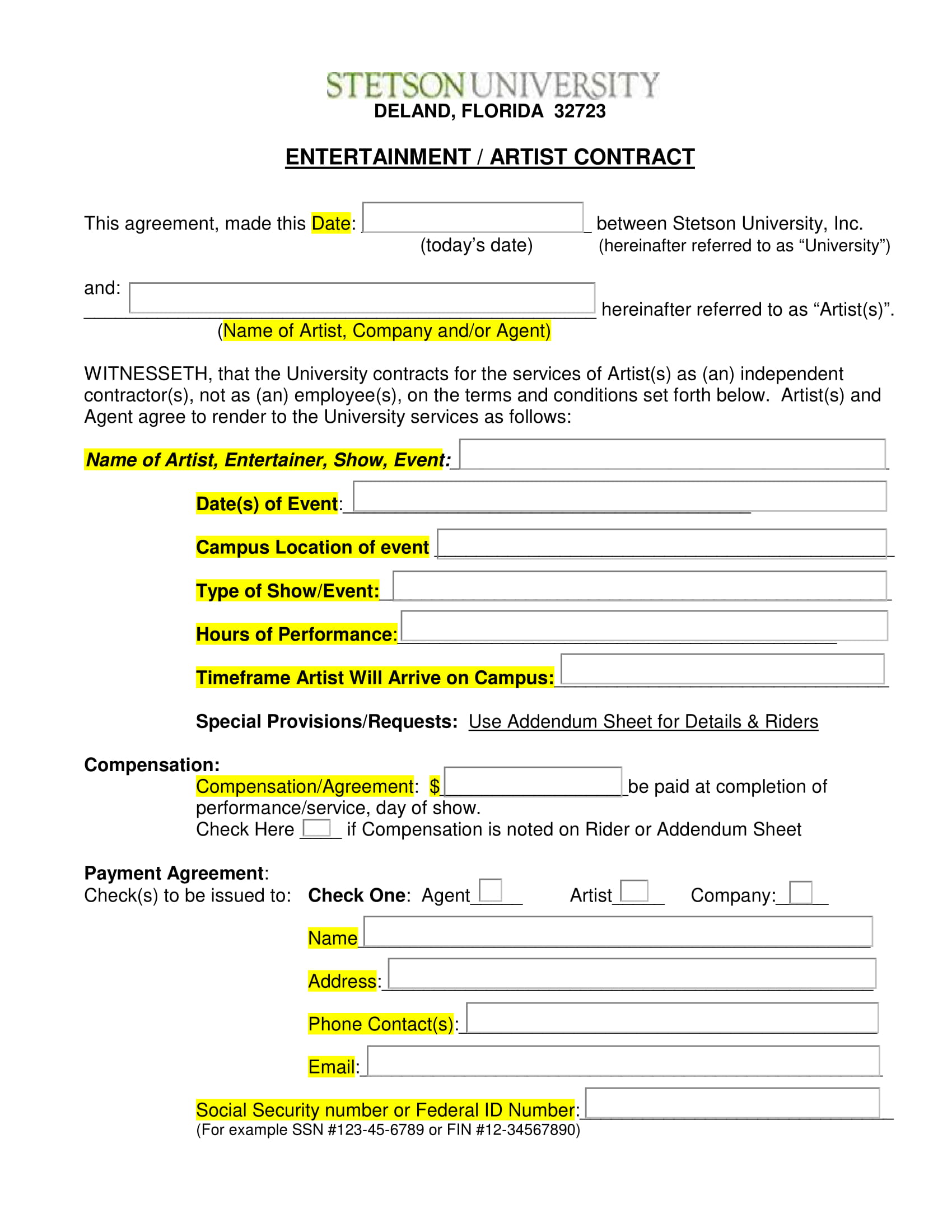

So I would suggest putting something simpler like:

In fact, due to the haste that the business operates in, it’s not uncommon for jobs to have already begun while the finer points of the contract are still being worked out.
ARTIST CLIENT CONTRACT TEMPLATE PROFESSIONAL
In my professional experience, I’ve never had amorphous dates about things being due a certain number of days after a contract is signed. While I agree with the substance of this clause, I do, however, suggest a different way of wording it. It’s essential to have due dates clearly written for both sketches and final art, as well as any other important target dates that need to be met. Having a clear understanding of what the project covers is vital to avoid misunderstandings and ensure the assignment stays within the agreed-upon parameters. You don’t want to commit to doing twelve illustrations for a certain fee, only to have the client later add three more and expect you to do it for the same price.
ARTIST CLIENT CONTRACT TEMPLATE FULL
This is important because it will cover the full scope of the project. This clause outlines a description of the work that’s being done. This form shows a great example of that language. IntroductionĮvery contract needs an introduction that lists the date the agreement is being entered into, who the different parties are that are agreeing to it, and where they’re located. So let’s examine the form below and try to make sense of it all: © Tad Crawford. Crawford’s well-deserving book.) Using this form, I’m going to go through point-by-point to explain what each of these things mean, why they’re important, and suggest some additions and tweaks that I think should be added for a basic, working contract. If you’d like to use it, please purchase Mr. (And, please note, it’s not for reproduction.

Crawford himself was gracious enough to allow me to reproduce it for the educational purposes of this discussion. Quite simply, it’s a resource that every illustrator should own and I encourage everyone to go out and buy it.įor the purposes of this post, I’m going to refer to Tad’s Confirmation of Assignment form. For those of you out there who still have CD drives, the book even comes with a CD preloaded with all the forms already on it that can easily be put into your own Word doc or InDesign file to tweak to your heart’s content. Forms include things like agency contracts, book publishing contracts, lecture agreements, model release forms, and even a nondisclosure agreement. An invaluable resource.īusiness and Legal Forms for Illustrators has sample contracts for everything an illustrator might need, as well as a nice explanation of all the terms those contracts use. I’m referring, of course, to Tad Crawford’s Business and Legal Forms for Illustrators. So, where do we start? Well, if you’ve never drawn up your own contract or seen one before, there’s a fantastic resource available for under $30. The goal of this post is to just discuss the standard boilerplate things an illustrator should be aware of. And contracts that you generate yourself are often going to have different language than contracts supplied to you by the client (and will usually be better for you). A book publishing contract, for instance, is going to have different needs than an editorial contract or a licensing contract. In this post, we’ll take a look at a great resource to help with your contracts and discuss the different things that should go into a standard one and the reasons why.Įvery illustration contract is going to be different depending on the industry it’s for. But what should go into that contract can oftentimes be confusing and downright scary, particularly for those of us who are more artistic-minded rather than business-minded. Having a contract is essential for any illustration assignment.


 0 kommentar(er)
0 kommentar(er)
